PDF chapter test TRY NOW
The human nervous system is a complex network of specialised cells to sense, understand, and act on our surroundings. The brain handles most executive functions, whereas the spinal cord serves primarily as an information highway connecting the brain to numerous cells throughout the body.
Electrochemical signals facilitate bidirectional communications by connecting the circuits of the body and the brain.
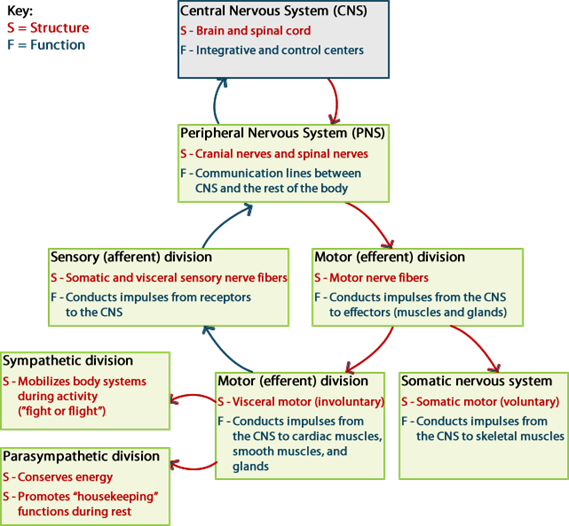
Classification of the nervous system
The nervous system is divided into three categories:
1. Central nervous system
2. Peripheral nervous system
3. Autonomous nervous system 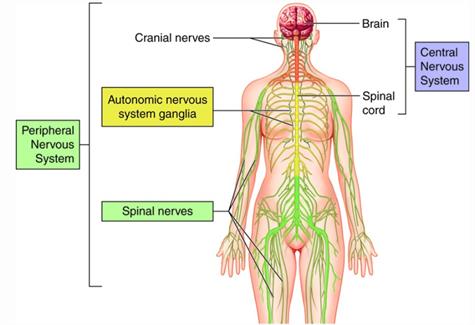

The picture showing the divisions of the nervous system
1. Central nervous system (CNS) :
The human central nervous system (CNS) is a network of about \(100\) billion nerve cells that regulates our activities, senses our surroundings, and defines who we are. Neurons are the CNS's functional units, and they are unique in their ability to transmit and store information.
CNS of vertebrates and invertebrates:
Invertebrates primarily comprise a solid ventral nerve cord with ganglia. Brain may be present in some invertebrates.
The brain and the spinal cord are the two main elements of the CNS of vertebrates. The brain is located in the cranium/skull, and the spinal cord is found in the vertebral column.
The presence or absence of myelin sheath determines the type of matter with which the CNS is formed. They are;
- White matter - Formed by myelinated nerve fibres
- Grey matter - Formed by non-myelinated nerve fibres
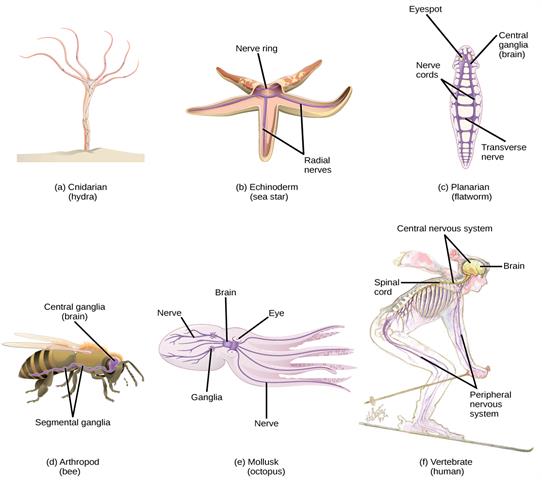
Types of nervous systems in animals
Is the CNS in control of the major decision-making process?
Yes, in organisms, the central nervous system is the body's information processing, control, and coordination unit. It acts as the body's control and coordinating centre, transmitting and receiving information to and from muscles, glands, organs, and other body systems via the peripheral nervous system.
Our thoughts, movements, emotions, and desires are all controlled by the central nervous system. It also regulates our respiration, heart rate, hormone secretion, and body temperature.
Neurons, glial cells, axons, membranes, the neural tube, and the ventricular system are important neuroanatomical features of the CNS. Neurons, synaptic transmission, and neurotransmitters are all important neurophysiological characteristics of the CNS.
- Nuclei are groups of neurons in the central nervous system.
- Ganglia are groups of neurons that exist outside of the central nervous system.
We should understand certain terminologies and their meanings before learning about the human brain and its structure.
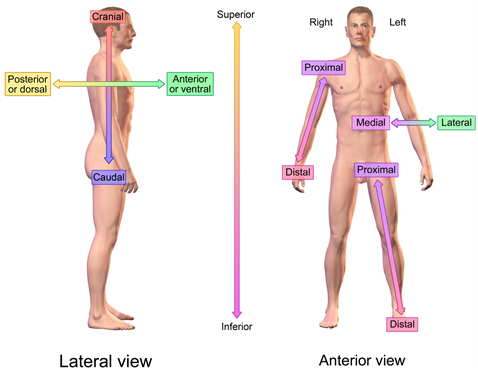
Anatomy directional terms of human
- Anterior - The front or direction toward the front of the body is referred to as anterior or ventral.
- Posterior - The back or direction toward the back of the body is referred to as posterior or dorsal.
- Superior - A place that is higher or higher than another section of the body.
- Inferior - A place below or lower (towards or toward the tail) than another region of the body is referred to as inferior or caudal.
- Lateral - The side or direction toward the side of the body is referred to as lateral.
- Medial - The centre or direction toward the middle of the body is referred to as medial.
- Proximal - Proximal refers to a place in a limb closer to the place of attachment or the body's trunk.
- Distal - Distal refers to a place in a limb farther from the place of attachment or the body's trunk.
- Superficial - The term "superficial" refers to a position closer to the body's surface.
- Deep - Deep refers to a place that is far away from the body's surface.
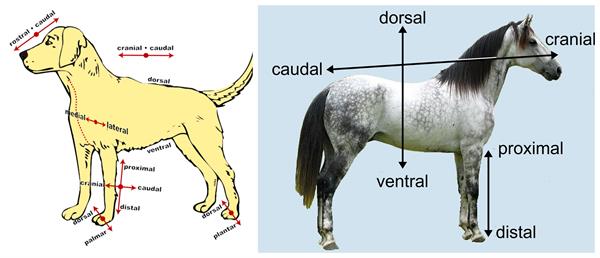
Anatomy directional terms of animals
Reference:
structure.http://learn.neurotechedu.com/the_nervous_system/
https://commons.wikimedia.org/wiki/File:Figure_35_01_01.jpg
https://commons.wikimedia.org/wiki/File:Horse_Axes.JPG
https://commons.wikimedia.org/wiki/File:662px-Anatomical-directions.png
https://commons.wikimedia.org/wiki/File:Blausen_0019_AnatomicalDirectionalReferences.png
